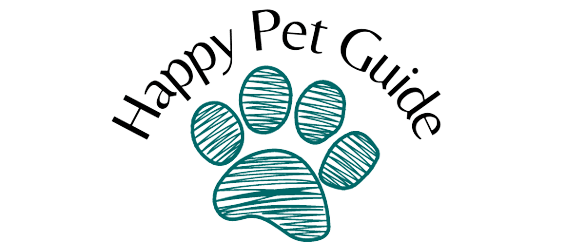Dogs are known for their playful nature, but sometimes their enthusiasm for toys can escalate into aggression. Toy aggression in dogs can be a concerning behavior that requires attention and understanding from dog owners. In this article, we will delve into the topic of toy aggression, explore its causes, signs, and impact, and provide effective strategies for managing and preventing this issue.
Table of Contents
Understanding Toy Aggression in Dogs
What is Toy Aggression?
Toy aggression refers to the aggressive behavior displayed by dogs when they interact with toys. It can manifest as growling, snapping, possessiveness, or resource guarding. Dogs may become overly possessive of their toys, displaying signs of aggression when someone approaches or tries to take the toy away.
Common Causes of Toy Aggression
Several factors can contribute to toy aggression in dogs. These include:
- Lack of proper socialization during puppyhood
- Resource guarding tendencies
- Previous negative experiences with toys or interactions
- Insecurity or fearfulness
- Lack of clear boundaries and training
Signs and Symptoms of Toy Aggression
Recognizing the signs and symptoms of toy aggression is crucial for understanding and addressing the issue.
Growling and Snapping
One common sign of toy aggression is growling and snapping when someone tries to take the toy away or approach the dog while playing with the toy. This behavior is a clear indication of the dog’s possessiveness and discomfort.
Possessiveness
Dogs with toy aggression may exhibit possessive behavior, such as guarding the toy, hovering over it, or displaying defensive body language when someone approaches.
Resource Guarding
Resource guarding is another symptom of toy aggression, where the dog perceives the toy as a valuable resource and displays aggressive behavior to protect it. This can include showing teeth, snarling, or even biting.
Impact of Toy Aggression on Dogs and Their Owners
Toy aggression can have various negative impacts on both dogs and their owners.
Behavioral Issues
If toy aggression is left unaddressed, it can escalate into more severe behavioral problems. Dogs may become aggressive in other situations or towards other objects, leading to a decline in their overall behavior and obedience.
Safety Concerns
Aggressive behavior associated with toy aggression can pose safety risks for both the dog and those around them. There is a higher chance of bites or injuries when dogs display aggressive tendencies.
Strained Relationships
Toy aggression can strain the relationship between dogs and their owners, as well as between the dog and other family members or pets. It can create tension, fear, and a sense of unease within the household.
Managing Toy Aggression
Addressing toy aggression requires a proactive approach from dog owners.
Training and Socialization
Proper training and socialization are essential for managing toy aggression. Teaching dogs basic commands like “drop it” or “leave it” can help redirect their focus and minimize possessive behavior. Additionally, positive reinforcement techniques can be used to reward desired behaviors.
Providing Alternatives
Offering alternative toys and engaging activities can help distract dogs from their possessiveness and redirect their energy. Interactive puzzle toys, chew toys, and supervised playdates with other friendly dogs can be beneficial in reducing aggression.
Seeking Professional Help
In some cases, toy aggression may require professional intervention. Consulting with a qualified dog trainer or animal behaviorist can provide personalized guidance and strategies for managing and modifying the dog’s behavior effectively.
Preventing Toy Aggression
Prevention is key when it comes to managing toy aggression in dogs.
Early Socialization
Early socialization is crucial for puppies to develop appropriate behavior around toys and other dogs. Exposing them to various environments, people, and toys during their critical developmental stages can help prevent future aggression.
Positive Reinforcement
Using positive reinforcement techniques, such as rewarding good behavior and providing treats, can create a positive association with toys and discourage possessive tendencies.
Supervision and Boundaries
Maintaining supervision during playtime and setting clear boundaries around toys can prevent the development of toy aggression. Teaching dogs to share and take turns can also contribute to a healthier playtime environment.
Conclusion
Toy aggression in dogs can be a challenging behavior to address, but with proper understanding and proactive measures, it is possible to manage and prevent this issue. By recognizing the signs, implementing effective training techniques, and providing appropriate alternatives, dog owners can create a safe and harmonious environment for their pets. Remember, seeking professional help when needed and focusing on early socialization are crucial steps in preventing toy aggression and fostering a positive relationship between dogs and their toys.
Also Read: 6 Tips on How to Stop Dog from Barking Excessively
Frequently Asked Questions
How can I prevent toy aggression in my dog?
Preventing toy aggression involves early socialization, positive reinforcement, and setting clear boundaries during playtime.
Is toy aggression a breed-specific issue?
No, toy aggression can occur in dogs of any breed. It is more related to individual experiences and behavior.
Can toy aggression be cured?
While it may not be entirely cured, toy aggression can be effectively managed and reduced through proper training and behavior modification techniques.
Should I punish my dog for displaying toy aggression?
Punishment is not recommended as it can exacerbate aggression. Instead, focus on positive reinforcement and redirecting your dog’s behavior.
Can toy aggression be a sign of underlying health problems?
In some cases, toy aggression can be linked to underlying health issues. It’s advisable to consult a veterinarian to rule out any medical causes.





Wow superb blog layout How long have you been blogging for you make blogging look easy The overall look of your site is magnificent as well as the content